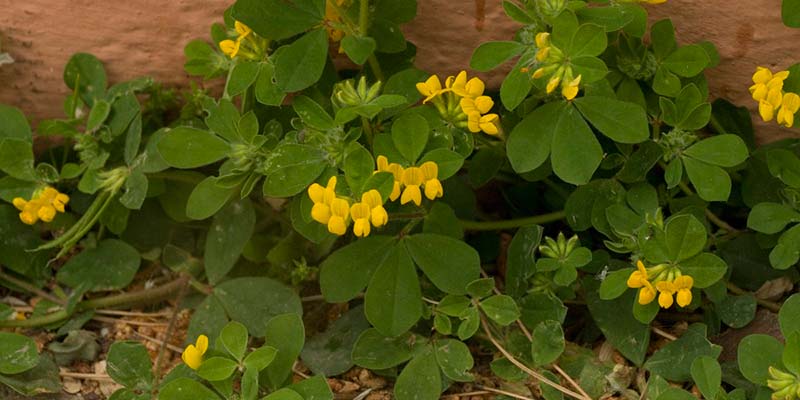The Mediterranean Gardening Association-Portugal (MGAP) has been contacted by the team updating the IUCN* Red Data List of plants for Portugal. They are asking for help in the detection of some target species of the Red List project, which may occur in the Moncarapacho area or in the Silves area, but which may occur generally in the Barrocal.
The species they are looking for are all from the traditional ‘dry orchards’ of this area, known locally as ‘pomares de sequeiro’. These are the old abandoned agricultural zones which classically contain the big three trees of the region: carob, almond and olive.
The Barrocal is one of three ecological areas (Serra, Barrocal and Littoral) and runs along the length of the Algarve between the Serra and the coastal strip. It comprises an extensive range of carbonated soils and has conditions which are of great scientific interest. It has a rich flora of 1001 taxa, 461 genera and 101 botanical families.
The list on this page gives the target plants for which the team would like to have more “pairs of eyes” looking on the ground because they have very few records for these plants (most are very rare or located in small restricted areas in the region and it is not certain where they may occur).
This is not the ideal time for looking for these plants but you may have seen them during walks or outings. This request for help in locating these plants is not a short-term issue and we would love to hear from you with any sightings at any time in the future.
If you find any of these plants, please take clear photos (ideally one of the plant and one close up) and the GPS coordinates (or one km of Google Earth) and send them to me. Please do not worry if you are unsure of the identification, just send anything you feel is possible so that it can be forwarded to the project for checking. They have a small number of sites registered but feel that these plants do occur in a wider area. We just need your help in finding them!
The IUCN Red List of Threatened Species™ is widely recognised as the most comprehensive, objective global approach for evaluating the conservation status of plant and animal species.
From its small beginnings, the IUCN Red List has grown in size and complexity and now plays an increasingly prominent role in guiding conservation activities of governments, NGOs and scientific institutions. The introduction in 1994 of a scientifically rigorous approach to determine risks of extinction, applicable to all species, has become a world standard.
In order to produce the IUCN Red List, the scheme draws on and mobilises a network of scientists and partner organisations working in almost every country in the world, who collectively hold what is probably the most complete scientific knowledge base on the biology and conservation status of species.
The species we wish to focus on are all of the traditional dry orchard areas of the Barrocal. You can see more images and information by entering the plant names into http://flora-on.pt
Please send any queries, photos and location information to Rosie Peddle – email rosie@thebtf.net in the first instance. The team may contact you direct to check on details of location. The really positive side of this is that we may be able to add to the general knowledge of the diversity hotspots in the Algarve and provide the data to support their evaluation and protection. Happy plant hunting!
*International Union for the Conservation of Nature – www.iucnredlist.org
By Rosie Peddle
|| features@algarveresident.com
rosie@thebtf.net | 289 791 869
Mediterranean Gardening Association – Portugal


























